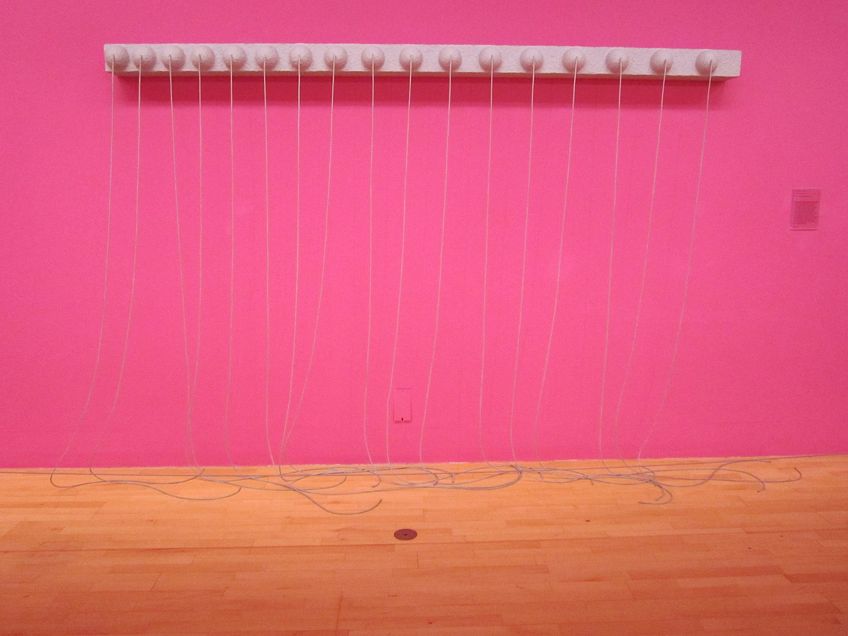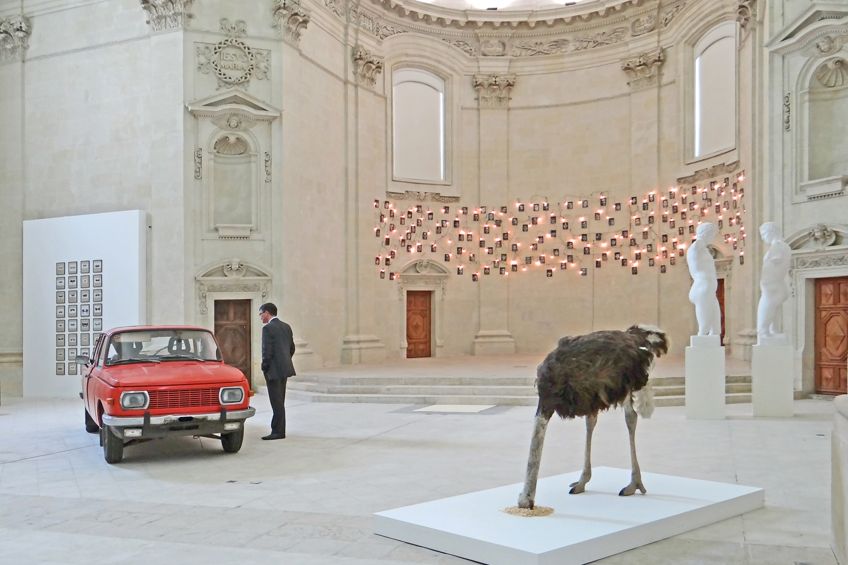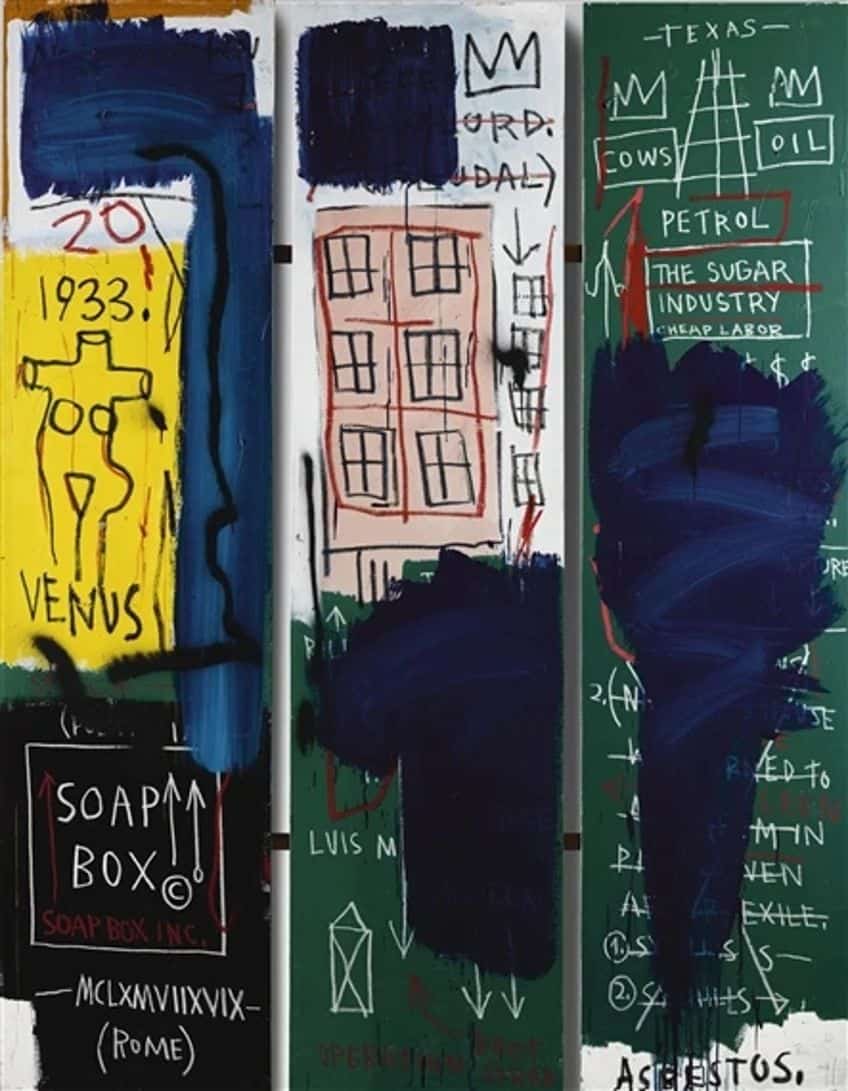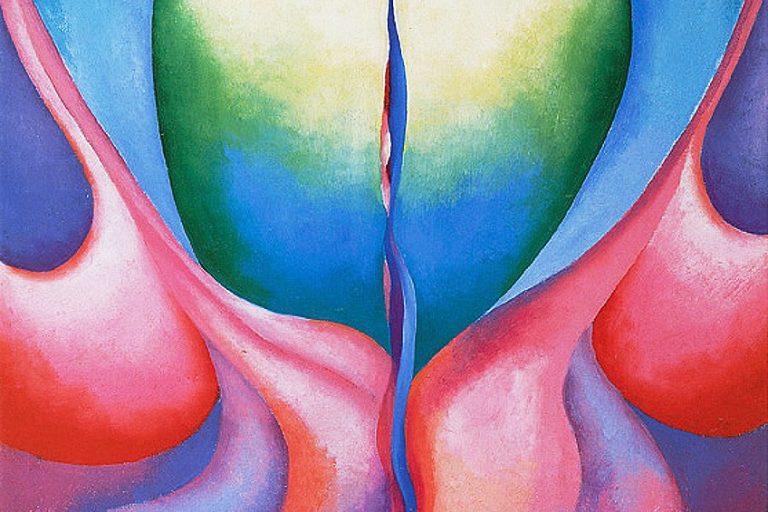Post-Minimalism – A Detailed Movement Overview
The concept of “Post-Minimalism” originally encompassed a number of artistic practices that developed in the late 1960s in the years after Minimalism began to fall out of favor. It served to group together several kinds of styles that shared similarities, yet often had quite diverse, even opposing goals. Along with certain elements of Conceptual art, the Post-Minimalism movement encompassed Performance art, Body art, Site-Specific art, and Process art. To learn more about the Post-Minimalism movement, read further below!
Table of Contents
Understanding the Post-Minimalism Movement
Some artists involved with the Post-Minimalist movement wanted to expand on the Minimalists’ pursuit of making art objects that did not serve the representational purpose of classical sculpture in an abstract manner. However, a number of Post-Minimalists had very different ideas in mind and reacted against the preceding movement’s anonymity, attempting to imbue sculpture with emotionally expressive aspects once again. Even though the theoretical and formal interests of this era are no longer as predominant, several of the Post-Minimalism movement’s themes and methods are still employed, making it one of the more resilient styles of the past 50 years.

The History of the Post-Minimalism Movement
In the 1960s, new advances in art happened rapidly and Post-Minimalism appeared not too shortly after Minimalism did. Eccentric Abstraction, an exhibition held in New York in 1966 and organized by critic Lucy Lippard, included artwork by an ensemble of artists including Louise Bourgeois, Eva Hesse, and Bruce Nauman. It included work with very intimate and sensual aspects that combined aspects of various styles such as Dada, Surrealism, and Expressionism. These works typically incorporate unique, soft, and malleable materials.
Some adopted Minimalism’s repetitive and modular compositions, while many also used more loosely structured frameworks.
While the curator had referred to the collection of works as “Eccentric Abstraction”, Robert Pincus-Witten, an art historian and critic saw these works as a reaction against Minimalism and coined the term “Post-Minimalism”. These sentiments received more attention in 1969 when the Whitney Museum of American Art displayed an exhibit called Anti-Illusion.
The show, which was based on Process art, addressed artists’ attitudes towards techniques and materials, as well as artists who expanded upon the Minimalism movement’s focus on anonymity and abstraction. This exhibit’s title Anti-Illusion alluded to a prevalent obsession with stripping sculpture of its last remnants of representation, and hence expressiveness. Representation, especially with regard to the human form, has always been central to sculpture, and breaking out from this tradition was a complicated and difficult endeavor.

When Attitudes Become Form, another notable exhibition of Post-Minimalism works that examined deeper conceptual ideas, was exhibited in Bern and London in 1969. That very same year, artist Robert Morris curated a Process art exhibition with works by Bruce Nauman, Eva Hesse, and Richard Serra, as well as a number of Italian artists. This demonstrated that, while the term Post-Minimalism originated in the United States, it also effectively reflected developments in other countries.
The Concepts and Trends of the Post-Minimalism Movement
As mentioned above, the Post-Minimalism movement encompassed a range of different styles and conceptual art forms. Some artists within the Post-Minimalism movement wanted to expand Minimalism’s emphasis on anonymity and free art of the creator’s personal expressions. They implemented various ways of employing industrial materials and impersonal production methods. They displayed material in ways that seemed unprocessed, or the material sagged and drooped, dictated by the material’s nature as opposed to the artist’s objectives. To separate it from Minimalism’s apparent preoccupation with composition and form, this is known as “anti-form”.
The Post-Minimalism movement included Process Art, Body Art, Earth Art, and Installation Art. Let’s look at these different art forms in more detail below.
Process Art
Process art, as represented by Robert Morris’ spontaneous accumulations of soft felt, arose in the late 1960s and laid the groundwork for subsequent Post-Minimal trends. Like Jackson Pollock’s Action Paintings, whereby the physical act of pouring paint onto the canvas is an intrinsic part of the finished piece, Process art creates work in which the method of creation – the act of production – is inextricably linked to its interpretation. This creative activity is central to Process art. As a result, it often gives rise to works in which impermanence, time, and site-specificity are significant issues.

Pieces in which Richard Serra launches molten lead against the gallery walls are another instance of the transitory, spontaneous, and formless nature of most Process art. However, Eva Hesse’s work exhibits an aspect of this as well, often using the Minimalist grid or cube as a base for the work, but focusing more on materials and matter. She explores the inherent potential of industrial materials by making them appear organic, such as hair or grass.
She imparts Minimalist shapes with sensuality and organic warmth to establish a protected sanctuary, while also making the work’s creation process visible to the observer.
Body Art
Another method Post-Minimal artists attempted to avoid the object character of Minimalist works was by expressing themselves by means of their bodies. It also provided them with an excellent opportunity to fill their creations with human expression, which was absent in Minimalist art. Dada and Fluxus performances, theater, and even anti-war rallies influenced body artists. Some of these artists utilized their bodies to make repetitive movements that emphasized routine, apparently meaningless activities that were usually carried out without thought or purpose.
The basic, repetitive gestures often made the observer aware of the passage of time and the materiality of the human form. Vito Acconci was one of the artists who experimented with this style. In Blinks (1969), he proceeded to walk down a road, attempting not to blink and capturing a photo every time he did. In several of his late 1960s films, Bruce Nauman examined the expressive power of basic actions. These films often portrayed the artist walking or pacing a perimeter line, or grabbing at his own face.
With all of these video performances, there exists no final product and no apparent objective for the artist’s activities. Body art could also sometimes prove to be rather aggressive, confrontational, and very risky. Artists started adopting an aggressive style that emphasized terror and the fragility of the human condition as a result of depressing and cynical emotions caused by economic hardships, decreasing trust in the government, and resistance to the Vietnam War. Acconci, for instance, incorporates an autobiographical element into his work after 1970, regularly putting himself under great stress. As a result, he effectively blurred the distinction between both our public and private selves.
In several of his Body art performances, he used violence and sadomasochism, he evoked his sexuality, and he viewed his body as a flexible object.
In Conversions (1970), for instance, Acconci explored many methods to change his sexual identity, including using the flame of a candle to remove the hair from his chest. In a series of early 1970s performances, Chris Burden purposefully put himself in physically risky situations, comparable to Acconci’s violent actions. Burden was locked up in a locker for days without anything to eat, was nailed to a vehicle, and was even shot in the arm in some of his performances. His performances became about the experience itself, often directly on the reality of violence and pain, through the creation of horrible scenes of self-mutilation.
Earth Art
In the 1970s, there was also an increasing understanding of the environment and worries about various ecological concerns. Many of those within the Post-Minimalism movement looked to the earth itself as a medium and place for making art. They transformed how a certain place was perceived, sometimes blurring the lines between the environment and the artwork itself. Line Made by Walking (1967) by Richard Long, a renowned British artist is an example of this. It takes the shape of a line created in the grass, a mark that may easily be noticed in the landscape and would certainly fade with time. Long’s work in the 1970s and 1980s brought him all over the world, and it mostly entailed traveling and creating a trail, or arranging stones into various shapes along the path.

He would then document his efforts with pictures and maps of the places he had explored. Work by Gordon Matta-Clark and Tony Cragg developed a kind of urbanized Earth Art, employing garbage and debris as location and medium, respectively. The desire to move beyond traditional sculpture and introduce art outside of the galleries is characteristic of the Post-Minimalism movement. This Earth art version emphasized waste, consumer society, and the human influence on the natural world. Change and the passage of time are significant themes in these and many other earthworks.
Spiral Jetty (1970) by Robert Smithson is a typical example of this style in that it uses time, decay, and temporality as primary themes.
Installation Art
Installation art featured the development of complex indoor spaces that engaged the observer as a type of actor-participant, as a continuation of the Post-Minimalist preoccupation with location and expansion beyond the typical art object. Bruce Nauman’s installation pieces, which he started producing about 1968, moved the focus from himself to the audience’s direct experience. Nauman’s works typically evoked feelings of terror, dread, confinement, anxiety, and confusion, resembling the atmosphere of some types of Body art.

His one work, for instance, required guests to navigate through small tunnels and corridors. Nauman combined monitors and video cameras as a form of self-surveillance system in a series of works based on the densely designed hallways. Such psychologically unsettling pieces foreshadowed Nauman’s sculptures in the early 1980s because they were directly informed by the circumstances of political prisoners. Vito Acconci, too, started to shift away from pieces that centered on his own experience and body by 1974.
Acconci started building bizarre house-like spaces in the 1980s that bewildered and discomforted audience members as they moved through them, recalling thoughts of the home and being imprisoned.
After the Post-Minimalism Movement
Throughout the 1970s, the term Post-Minimalism covered a wide range of artistic approaches. While it declined in the 1980s as traditional mediums like painting resurfaced, it made a vital contribution to the world of art during that decade by establishing the groundwork for art that explored identity politics and issues related to gender, racism, and sexuality. While Post-Minimalism appeared to have died in the 1980s, it still lives on today. This is primarily owing to the fact that artists working in any of its many styles, from Process art to Performance and Installation art, must still confront issues that were prevalent in the 1960s and 1970s.

That concludes our exploration of the fascinating movement known as Post-Minimalism. This movement covered many sub-styles and forms, such as Process art, Body art, Earth art, and Installation art. What unified all of these forms was the desire to explore different mediums of expression, including our own bodies and the earth itself. This took art out of the galleries and off canvases, and placed them directly into the real world around us, allowing us to engage and interact with these pieces and performances in a way that had not previously been explored.
Frequently Asked Questions
What Was the Post-Minimalism Movement?
The term was first used to characterize the inclinations of the exhibited artworks at the Eccentric Abstraction exhibition in 1966. These works emphasized the process of production, the use of unconventional materials, greater expressiveness, and the use of the element of chance. Post-Minimalism reinforced the Minimalists’ interest in abstraction and encompassed Process art, Body art, Performance art, and Earth art, as well as many elements of Conceptual art.
Who Were Popular Post-Minimalist Artists?
First up is Eva Hesse, who was widely regarded as an influential figure in Post-Minimalism. Bruce Nauman is another notable figure who is known for his wide range of work, which includes video art, sculpture, neon works, and performance art. Richard Serra is also worth noting due to his large-scale steel sculptures which challenged the viewer’s conceptions of gravity and space. Richard Long is an English artist who made site-specific pieces out of natural elements such as mud, stones, and branches. Post-Minimalist concepts like entropy and decay were also addressed in Robert Smithson’s work. Last is Robert Irwin, who is well-known for his experiments with light and space.
Isabella studied at the University of Cape Town in South Africa and graduated with a Bachelor of Arts majoring in English Literature & Language and Psychology. Throughout her undergraduate years, she took Art History as an additional subject and absolutely loved it. Building on from her art history knowledge that began in high school, art has always been a particular area of fascination for her. From learning about artworks previously unknown to her, or sharpening her existing understanding of specific works, the ability to continue learning within this interesting sphere excites her greatly.
Her focal points of interest in art history encompass profiling specific artists and art movements, as it is these areas where she is able to really dig deep into the rich narrative of the art world. Additionally, she particularly enjoys exploring the different artistic styles of the 20th century, as well as the important impact that female artists have had on the development of art history.
Learn more about Isabella Meyer and the Art in Context Team.
Cite this Article
Isabella, Meyer, “Post-Minimalism – A Detailed Movement Overview.” Art in Context. November 8, 2023. URL: https://artincontext.org/post-minimalism/
Meyer, I. (2023, 8 November). Post-Minimalism – A Detailed Movement Overview. Art in Context. https://artincontext.org/post-minimalism/
Meyer, Isabella. “Post-Minimalism – A Detailed Movement Overview.” Art in Context, November 8, 2023. https://artincontext.org/post-minimalism/.










